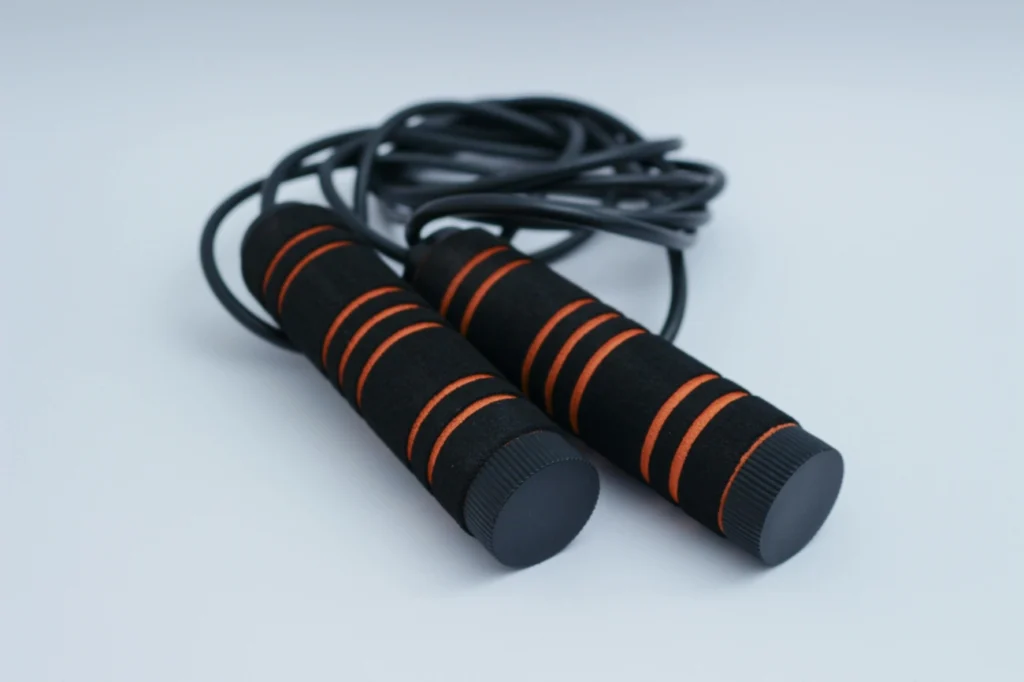Height and Growth
Understanding how height increases over time can help clear up common myths about exercises like skipping rope and their role in making you taller. Human height is largely determined by genetics, but nutrition, hormones, and overall health also play key roles during your formative years.
How Growth Happens in the Body
During childhood and adolescence, bones grow in length through specialized areas called growth plates (epiphyseal plates) located at the ends of long bones. These plates are made of cartilage, which turns into hardened bone tissue as you grow. Once these growth plates fuse — usually after puberty — bones can no longer lengthen. This means your natural height potential is fixed after this point, no matter the exercise you do.
Factors Affecting Height Potential
While you cannot change your genetic blueprint, several factors influence whether you reach your maximum possible height:
- Genetics – Accounts for the majority of your height potential based on inherited traits.
- Nutrition – Adequate protein, calcium, vitamin D, and micronutrients are essential for strong bones.
- Hormonal Balance – Growth hormone, thyroid hormones, and sex hormones directly impact bone growth and development.
- Overall Health – Chronic illness, undernutrition, or poor lifestyle habits can limit proper growth.
Growth Timeline and Peak Growth Periods
Most people experience their fastest growth during puberty.
- Girls: Typically between ages 10–14, with peak growth around age 12.
- Boys: Typically between ages 12–16, with peak growth around age 14.
After these phases, growth slows significantly, and once the growth plates close (around age 18 for girls and 20 for boys), height increases naturally stop. Exercises like skipping rope can still improve posture, muscle tone, and bone strength, which help you stand taller and maintain good posture — but they can’t elongate your bones after this point.
Does Skipping Rope Directly Increase Height
What Skipping Rope Involves Physically
Skipping rope is a full-body cardiovascular workout. It involves constant jumping, which engages your legs, core, arms, and coordination while keeping your heart rate high. It’s a weight-bearing activity, meaning it strengthens bones and muscles over time. However, while it improves overall fitness, it’s important to know how it actually relates to height growth.
Effect of Skipping Rope on Growth Plates
Your body grows taller during childhood and adolescence mainly because of growth plates—soft areas of cartilage at the ends of long bones. When you’re still in your growth years, these plates slowly produce new bone tissue, making your bones longer.
Once these plates close (usually in your mid to late teens for girls and late teens to early twenties for boys), bone length no longer increases, and your height stays the same for life.
Jump rope workouts, on their own, don’t stimulate the growth plates to produce more bone length. There’s no scientific evidence that the physical motion of jumping directly lengthens bones.
Why Skipping Rope Does Not Directly Lengthen Bones
- The up-and-down motion doesn’t stretch bones—bones lengthen only through natural growth plate activity before they fully fuse.
- Skipping rope can improve posture, core stability, and muscle tone, which might help you stand taller, but it’s not adding actual inches to your height.
- Most claims that skipping rope makes you taller come from the fact that it can make you look taller due to better body alignment and leaner muscle definition, not because your bones grew.
Skipping rope is a great way to stay active, support healthy growth while you’re still developing, and look your best, but it’s not a magic height-boosting exercise.
How Skipping Rope Can Support Healthy Growth Indirectly

Skipping rope might not make you grow taller by lengthening your bones, but it can help you reach your natural height potential by improving overall fitness and supporting body functions linked to growth. Here’s how it works:
Full Body Fitness and Weight Management
Jump rope is a high-intensity, full-body workout. It works your legs, core, arms, and shoulders, which helps build lean muscle and keep body fat in check. Maintaining a healthy weight during growth years is important because excess weight can affect posture and put stress on bones, while being underweight can impact bone health and hormone function.
Posture Improvement and Spinal Health
Keeping a healthy posture can make you appear taller and also allow your spine to stay aligned while you grow. Skipping rope engages your core and back muscles, which improves stability and reduces slouching. Stronger core muscles also mean less compression on your spine when standing or walking. Practicing correct jumping form (see proper rope skipping posture) can make a big difference for both posture and injury prevention.
Boosts Growth Hormone Release Through Cardio
Exercises like skipping rope increase circulation and stimulate the body’s natural release of human growth hormone (HGH) — especially when done consistently. While HGH isn’t magic, it plays a big role in helping your bones, muscles, and tissues develop during your growth years.
Maximizing Natural Height Potential
When you combine jump rope with a healthy diet, proper sleep, and stretching, you give your body the best shot at reaching its genetic height limit. The mix of cardio, muscle strengthening, and posture support from skipping rope helps create a healthy, athletic physique that shows your height at its best.
Tip: For effective growth-supporting results, aim for 10–15 minutes of skipping as part of your daily activity, and choose a rope that matches your height and skill level. For example, a quality adjustable skipping rope makes it easier to get the right length and maintain perfect form.
Other Benefits of Skipping Rope Beyond Height
While skipping rope may not directly make you taller, it offers a long list of physical and mental benefits that can help you stay fit, healthy, and energized.
Cardiovascular Health and Endurance
Skipping rope is a top-tier cardio workout that elevates your heart rate quickly. Doing it regularly can:
- Strengthen your heart and lungs
- Improve blood circulation
- Boost stamina for other sports or daily activities
Just 10 minutes of jump rope can burn as many calories as an 8-minute mile run—making it a time-efficient option for busy schedules.
Coordination, Agility, and Bone Density
The constant rhythm and footwork in skipping improve balance, coordination, and reaction speed. This is why athletes in boxing, basketball, and tennis use it for training.
- Helps sharpen foot-eye coordination
- Enhances agility for quick movements
- Supports bone health by increasing bone density through repeated, low-impact stress
Mental Agility and Stress Relief
Jump rope isn’t just physical—it also sharpens the mind. The rhythmic movement requires focus, which can help clear your head. Many people use it as a quick mental reset during the day. Skipping releases endorphins (the “feel-good” hormones), reducing anxiety and improving mood.
Affordable and Accessible Physical Activity
Unlike treadmills or expensive gym equipment, a jump rope is:
- Budget-friendly—you can find durable ropes for under $20
- Portable—easy to carry and use anywhere
- Adjustable—you can choose styles to match your fitness level, like PVC jump ropes for beginners or weighted options for advanced training
| Benefit | Why It Matters |
|---|---|
| Cardiovascular Health | Stronger heart, better stamina |
| Coordination & Agility | Sports performance, balance |
| Bone Density | Prevents osteoporosis later in life |
| Mental Clarity | Reduces stress, boosts focus |
| Affordability | Low cost, all-skill levels |
For anyone looking to boost health, stay fit, and improve athletic skills, skipping rope offers unmatched value without big investments in time or money.
Tips for Maximizing Height Potential During Growth Years
If you’re still in your growing years—especially before your growth plates close—there are a few things you can do to support your natural growth and help your body reach its full potential. While no exercise, including skipping rope, can magically make you taller, smart daily habits can make a big difference.
Eat a Balanced Height-Friendly Diet
Your bones, muscles, and tissues need the right fuel to grow. Focus on:
- Calcium-rich foods like milk, yogurt, cheese, and leafy greens to strengthen bones.
- High-quality protein from chicken, eggs, fish, beans, and nuts to build muscle and support tissue repair.
- Essential vitamins and minerals such as vitamin D (from sunlight or fortified foods), magnesium, zinc, and potassium for bone and muscle health.
- Plenty of whole foods over processed snacks to keep energy steady.
Get Adequate Sleep
Most natural height growth happens during sleep when your body produces human growth hormone (HGH). As a general guide:
- Kids (ages 6–13) should aim for 9–11 hours per night.
- Teens (ages 14–17) need 8–10 hours per night.
- Stick to consistent bedtime hours and avoid screens before bed for better rest quality.
Make Exercise Part of Your Routine
Regular movement is key for strong bones, healthy joints, and proper posture. Combine different activities:
- Stretching to keep muscles and joints flexible.
- Yoga for posture, flexibility, and core strength.
- Skipping rope for cardiovascular health, coordination, and bone strength. A few short sessions a week can make a big difference. If you’re just starting out, here’s a helpful beginner rope skipping routine.
Avoid Habits That Can Stunt Growth
Some lifestyle choices can interfere with your natural growth, especially during your teen years:
- Skipping meals or eating a poor diet.
- Chronic lack of sleep.
- Smoking, vaping, or alcohol use.
- Excessive processed food and sugary drinks.
- Poor posture that keeps the spine compressed.
By combining good nutrition, proper rest, and consistent exercise, you give your body the best shot at hitting its maximum height potential. Skipping rope is a simple, low-cost, and effective addition to this plan—especially when paired with other healthy habits.
Choosing the Right Jump Rope for Growth and Fitness Goals

Picking the right jump rope matters if you want to use it for both fitness and supporting healthy growth during your younger years. A rope that fits your skill level and workout style can improve results, help you stick with it, and prevent injuries.
Types of Jump Ropes for Different Needs
| Type | Best For | Key Features |
|---|---|---|
| PVC Jump Ropes | Beginners, kids, light workouts | Lightweight, smooth rotation, affordable |
| Beaded Jump Ropes | Beginners, school PE, learning tricks | Heavier feel, clear rope feedback, tangle-free |
| Weighted Ropes | Intermediate to advanced users | Builds strength, burns more calories |
| Speed Ropes | Athletes, HIIT training, boxing | Ultra-light, faster spins for endurance and agility |
Benefits of Using a Quality Jump Rope
- Better durability – Won’t crack or tangle easily.
- Smooth rotation – Easier on wrists, reduces tripping.
- Adjustable length – Fits your height for correct form.
- Comfortable handles – Prevents hand fatigue.
A good rope also allows consistent cardio sessions, which indirectly supports a healthy height potential by boosting stamina, posture, and overall strength.
Proper Skipping Technique
- Adjust rope to height – When you step in the center, handles should reach your armpits.
- Light bounces – Jump 1–2 inches off the ground to avoid strain.
- Stay on the balls of your feet – This reduces joint impact.
- Engage your core – Protects your back and supports posture.
Workout Frequency Tips
- For kids and teens: 5–10 minutes daily or as part of a warm-up.
- For general fitness: 15–20 minutes, 3–5 times a week.
- For athletes: Short bursts of high intensity or interval training.
The right jump rope, paired with a balanced exercise routine, makes it easier to hit your fitness goals and keep your body in great shape for natural growth and development.
Common Myths About Skipping Rope and Height Debunked
There are a lot of claims online about jump rope height growth benefits, but most of them aren’t backed by science. Let’s clear up some of the most common myths.
Myth 1 Skipping Rope Stretches Your Legs to Make You Taller
Some people believe that skipping rope physically elongates your leg bones, leading to increased height. In reality, bone length increases only when your growth plates are still open during childhood and adolescence, and this process is controlled mainly by genetics, hormones, and nutrition—not by stretching or repeated impact from exercises like jump rope.
While skipping rope can strengthen leg muscles and improve posture, it will not make your bones grow longer.
Myth 2 Certain Jumping Styles Can Boost Height More Than Others
You may hear that doing double unders, high knees, or “special jumps” can trigger more height growth. Scientifically, no jump rope variation changes how your bones grow. Different techniques can improve coordination, agility, and muscle endurance, but they won’t alter your maximum height potential.
What Science and Experts Say
- Bone growth is determined by genetics and continues only until the epiphyseal (growth) plates fuse, usually by the end of the teen years.
- Exercise like skipping rope is great for bone density, cardiovascular fitness, and muscle tone, but it doesn’t lengthen bones after the growth plates close.
- The main indirect benefits are better posture, a stronger core, and healthier weight, which can make a person appear taller and more confident.



